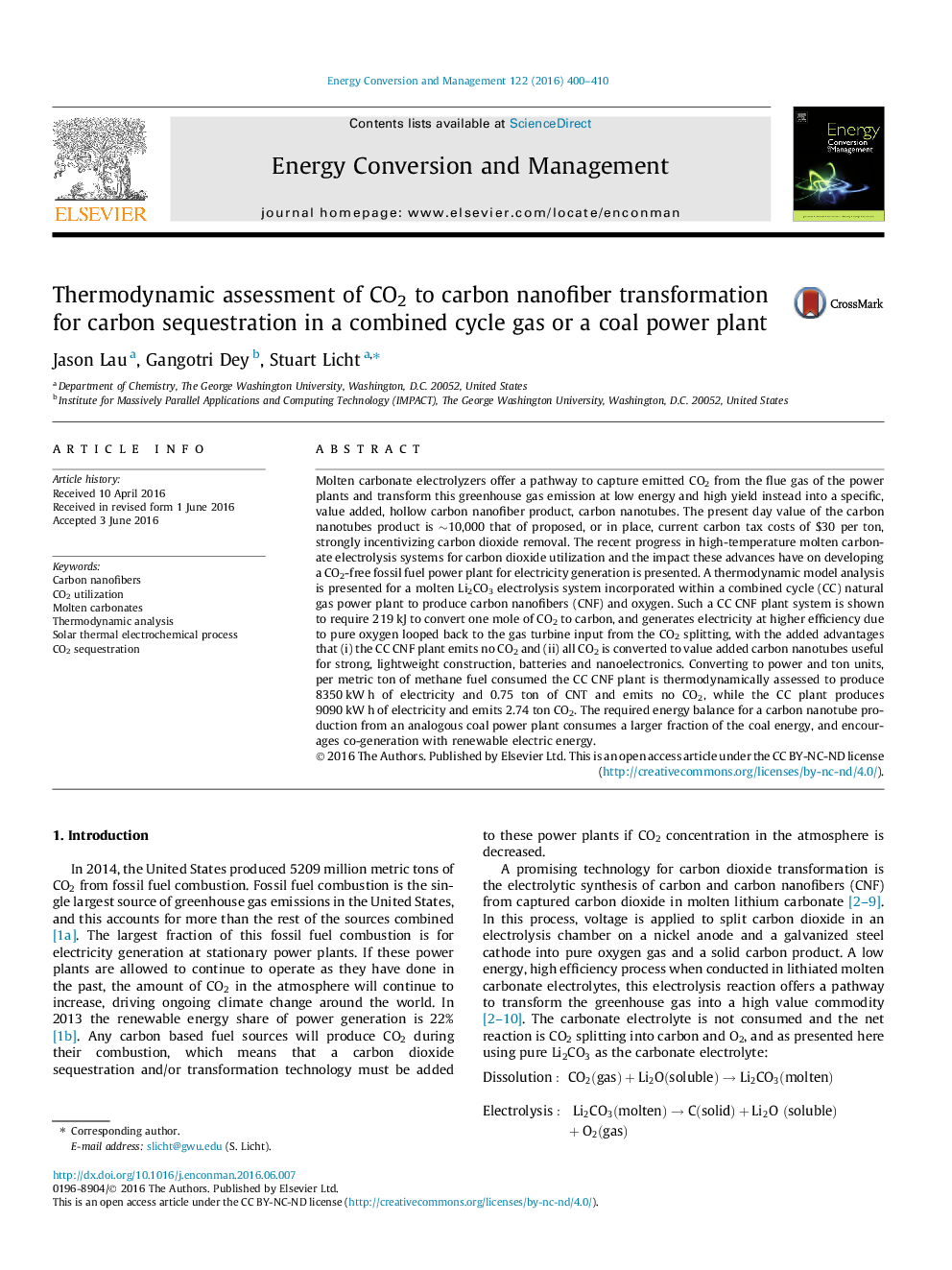| Article ID | Journal | Published Year | Pages | File Type |
|---|---|---|---|---|
| 7160301 | Energy Conversion and Management | 2016 | 11 Pages |
Abstract
Molten carbonate electrolyzers offer a pathway to capture emitted CO2 from the flue gas of the power plants and transform this greenhouse gas emission at low energy and high yield instead into a specific, value added, hollow carbon nanofiber product, carbon nanotubes. The present day value of the carbon nanotubes product is â¼10,000 that of proposed, or in place, current carbon tax costs of $30 per ton, strongly incentivizing carbon dioxide removal. The recent progress in high-temperature molten carbonate electrolysis systems for carbon dioxide utilization and the impact these advances have on developing a CO2-free fossil fuel power plant for electricity generation is presented. A thermodynamic model analysis is presented for a molten Li2CO3 electrolysis system incorporated within a combined cycle (CC) natural gas power plant to produce carbon nanofibers (CNF) and oxygen. Such a CC CNF plant system is shown to require 219Â kJ to convert one mole of CO2 to carbon, and generates electricity at higher efficiency due to pure oxygen looped back to the gas turbine input from the CO2 splitting, with the added advantages that (i) the CC CNF plant emits no CO2 and (ii) all CO2 is converted to value added carbon nanotubes useful for strong, lightweight construction, batteries and nanoelectronics. Converting to power and ton units, per metric ton of methane fuel consumed the CC CNF plant is thermodynamically assessed to produce 8350Â kWÂ h of electricity and 0.75 ton of CNT and emits no CO2, while the CC plant produces 9090Â kWÂ h of electricity and emits 2.74 ton CO2. The required energy balance for a carbon nanotube production from an analogous coal power plant consumes a larger fraction of the coal energy, and encourages co-generation with renewable electric energy.
Related Topics
Physical Sciences and Engineering
Energy
Energy (General)
Authors
Jason Lau, Gangotri Dey, Stuart Licht,
